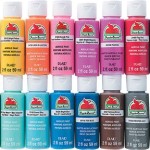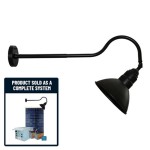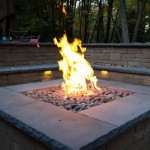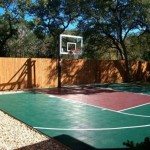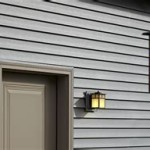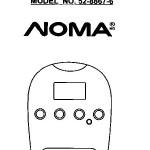Outdoor Wiring and Light Fixtures: A Comprehensive Guide
Outdoor lighting enhances the aesthetics, security, and functionality of residential and commercial properties. Proper wiring and installation of outdoor light fixtures are crucial for safety and longevity. This article provides a detailed overview of the necessary aspects of outdoor wiring and light fixture installation, covering essential safety precautions, wiring methods, fixture selection, and maintenance considerations.
Before embarking on any outdoor wiring project, prioritizing safety is paramount. Electricity and water are a dangerous combination, so meticulous planning and execution are vital to prevent electrical shock or fire hazards. Always consult with a qualified electrician if unsure about any aspect of the installation.
Key Point 1: Pre-Installation Safety Measures
Prior to beginning any electrical work, turning off the power supply to the circuit being worked on is the first and most important step. This can be accomplished by switching off the appropriate circuit breaker or removing the fuse at the main electrical panel. Verify that the power is off using a non-contact voltage tester on the wires to be handled. Never assume that the power is off simply because a switch is in the "off" position.
Wearing appropriate personal protective equipment (PPE) is also essential. This includes insulated gloves designed for electrical work, safety glasses to protect the eyes from debris, and appropriate footwear. Avoid wearing any jewelry or metallic objects that could conduct electricity.
Carefully inspect all tools and equipment to ensure they are in good working order and properly insulated. Damaged or faulty tools should never be used. Use only tools specifically designed for electrical work to avoid potential hazards.
Understanding local electrical codes and regulations is crucial. These codes specify the requirements for wiring methods, grounding, and fixture installation. Contacting the local building department to obtain necessary permits and inspections ensures compliance with these regulations.
Planning the project thoroughly before starting any physical work can prevent errors and ensure a smooth installation process. This includes identifying the location of underground utilities, such as gas lines and water pipes, to avoid accidental damage during excavation. Call the local "Call Before You Dig" service (often 811 in the US) to have these utilities marked before digging.
Key Point 2: Wiring Methods for Outdoor Light Fixtures
Selecting the appropriate wiring method for outdoor light fixtures is crucial for ensuring durability and safety in various weather conditions. Several wiring options are available, each with its own advantages and disadvantages.
One common option is Underground Feeder (UF) cable. UF cable is specifically designed for direct burial applications, meaning it can be buried directly in the ground without the need for conduit in many applications. It is moisture-resistant and suitable for use in wet or damp locations. The depth at which UF cable must be buried is typically dictated by local electrical codes and often varies depending on the voltage and application.
Another wiring method utilizes conduit, such as Rigid Metal Conduit (RMC) or Electrical Metallic Tubing (EMT). Conduit provides physical protection for the wires and is often required in areas where the wiring is exposed to potential damage. Conduit can be buried underground or run along the surface of a building. When burying conduit, the type of conduit used must be suitable for direct burial, and proper fittings and connectors must be used to ensure a watertight seal.
For low-voltage lighting systems, such as landscape lighting, a low-voltage cable specifically designed for outdoor use should be selected. These cables are typically direct burial-rated and are designed to withstand the elements. Low-voltage lighting systems are often easier to install than line-voltage systems, but they typically require a transformer to step down the voltage from the main power supply.
When running wires through walls or other building surfaces, use appropriate fittings and connectors to ensure a watertight and secure connection. Seal any openings with a weatherproof sealant to prevent moisture from entering the building. Consider using weatherproof junction boxes to protect wire connections from the elements.
Grounding is an essential safety requirement for all outdoor electrical installations. Grounding provides a path for fault current to flow back to the electrical panel, tripping the circuit breaker and preventing electrical shock. Each outdoor light fixture should be properly grounded to the grounding system of the building. This typically involves connecting the grounding wire from the fixture to the grounding wire in the junction box.
Key Point 3: Selecting and Installing Outdoor Light Fixtures
Choosing the right outdoor light fixture depends on several factors, including the desired aesthetic, the intended use, and the environmental conditions. Consider the style of the property, the amount of light needed, and the energy efficiency of the fixture. Choose fixtures that are specifically designed for outdoor use and are UL-listed or ETL-listed for wet locations.
Wall-mounted fixtures are a versatile option for providing general lighting and accent lighting. They can be installed on walls, columns, or posts. Ensure that the wall is structurally sound and that the fixture is securely mounted. Consider the direction of the light and the potential for glare when positioning wall-mounted fixtures.
Post-mounted fixtures are ideal for illuminating driveways, walkways, and other outdoor areas. They are typically mounted on a post or pole and provide a wide area of illumination. Ensure that the post is securely anchored in the ground and that the fixture is properly aligned.
Landscape lighting fixtures, such as spotlights, floodlights, and path lights, can be used to highlight architectural features, trees, and shrubs. These fixtures are typically low-voltage and are easy to install. Position the fixtures carefully to avoid glare and to create the desired lighting effect.
Motion-sensor lights provide security lighting by automatically turning on when motion is detected. They can be installed near doorways, garages, and other areas where security is a concern. Adjust the sensitivity and range of the motion sensor to prevent false alarms.
Installing light fixtures involves connecting the fixture wires to the circuit wires in the junction box. Use wire connectors that are suitable for outdoor use and ensure that the connections are tight and secure. Follow the manufacturer's instructions for wiring and mounting the fixture. After installation, test the fixture to ensure that it is working properly.
Regular maintenance is essential for ensuring the longevity and safety of outdoor light fixtures. Inspect the fixtures regularly for signs of damage or corrosion. Clean the lenses and reflectors to maintain optimal light output. Replace burned-out bulbs or lamps promptly. Trim any vegetation that may be obstructing the light or damaging the wiring.
In areas subject to severe weather, consider using fixtures that are specifically designed to withstand high winds, heavy rain, or extreme temperatures. These fixtures are typically more robust and durable than standard outdoor fixtures. Consider installing a surge protector to protect your outdoor lighting system from power surges caused by lightning or other electrical disturbances.
Furthermore, choosing energy-efficient lighting options like LED (Light Emitting Diode) is increasingly important. LED fixtures offer significant energy savings compared to traditional incandescent or halogen bulbs. LED bulbs also have a much longer lifespan, reducing the frequency of replacements. This translates to lower energy bills and reduced maintenance costs over the long term.
Smart outdoor lighting systems are gaining popularity, offering features such as remote control, dimming capabilities, and scheduling. These systems can be controlled via a smartphone app or voice assistant, allowing for customized lighting scenes and energy savings. Integration with home automation systems can further enhance the functionality and convenience of outdoor lighting.
Remember that all work should be carried out in accordance with the National Electrical Code (NEC) or local electrical codes. These codes provide detailed requirements for wiring methods, grounding, fixture installation, and other aspects of electrical work. Adhering to these codes ensures the safety and reliability of the electrical system.
When running electrical wires underground, it's crucial to consider the soil conditions. In areas with acidic soil, using corrosion-resistant conduit or cable is essential to prevent premature failure of the wiring. Similarly, in areas with rocky soil, providing additional protection for the wiring, such as a layer of sand or gravel, can prevent damage from sharp rocks.
Finally, periodically inspecting the entire outdoor electrical system, including wiring, fixtures, and ground connections, is highly recommended. Identifying and addressing any potential problems early on can prevent more serious issues from developing. Consider hiring a qualified electrician to perform a comprehensive inspection every few years.

Replacing An Outdoor Light Fixture Concord Carpenter

Replacing An Outdoor Light Fixture Concord Carpenter
How To Replace An Outdoor Light

Replacing An Outdoor Light Fixture Concord Carpenter

How To Install A Porch Light Exterior Fixtures Lighting

Home Improvement How To Remove Replace Outdoor Light Fixtures Porch Driveway Etc
How To Replace An Outdoor Light

Home Improvement How To Remove Replace Outdoor Light Fixtures Porch Driveway Etc

How To Turn A Hard Wired Light Fixture Into Plug In The Happy Housie

How To Install An Outdoor Light Fixture Des And Sses
Related Posts
